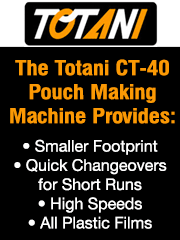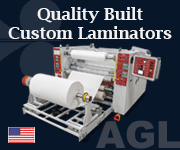Recycled Content, New Possibilities
- Published: July 14, 2025
Navigating the Shift to PCR Packaging
By Jennifer Albert, Polyethylene Market Manager for Food Packaging, NOVA Chemicals
Major changes are coming to the packaging landscape. Legislation surrounding waste management is directly impacting how plastic packaging is designed, produced and recycled. Several states have passed post-consumer recycled (PCR) content mandates for plastic packaging with recycled material requirements that increase over time.
Extended producer responsibility (EPR) laws are also gaining momentum, with the implementation of Oregon's Recycling Modernization Act (RMA) beginning this summer. Colorado, California and Minnesota have also passed EPR laws that will levy fees on packaging producers based on multiple factors, including the volume and type of packaging they supply to the state.
These laws come at a time of expanding voluntary corporate commitments to reduce plastic waste, with many of the world's largest companies joining initiatives like the Ellen Macarthur Foundation's Global Commitment. Progress toward these goals, however, has been slow. According to the U.S. Packaging Recycled Content Goals Analysis from AMERIPEN and the Plastics Industry Association (PLASTICS) Recycling Is Real initiative1, while the average PCR goal among major CPG companies is 26 percent, actual usage hovers closer to 10 percent. This represents a significant increase from just 5 percent in 2021, but still falls short of stated targets.
Much of this gap is due to a combination of limited supply and lingering concerns about how PCR content affects packaging performance. Incorporating recycled materials can affect processability, mechanical properties and clarity. For converters, this presents a complex challenge: how can we meet customer and regulatory demands for PCR packaging without sacrificing production efficiency, product protection or brand equity?
The good news is that PCR supply is steadily increasing. AMERIPEN reports that since 2021, U.S. plastics reclaimers have more than doubled their recycling capacity to make PCR resins. New recycling networks are being developed to offer a wide range of versatile PCR materials, such as using plastic film to produce food-contact PCR grades that meet strict US Food and Drug Administration (FDA) requirements.
As packaging producers explore how to optimize their packaging and incorporate PCR materials, converters must have a clear understanding of how each material choice affects compliance and cost. It is critical for converters to work with the right partners who can help enhance efficiency in the packaging design process, achieving the right balance of performance and aesthetics with the incorporation of PCR materials.
Understand Legislation Around PCR Mandates
Companies throughout the packaging industry must be well informed about state requirements regarding how PCR mandates and EPR legislation approach PCR plastic. Package redesigns can be beneficial, but it is essential that producers consider the entire lifecycle of each packaging material, from how it is sourced to its options for downstream recovery.
In states with PCR mandates, there are typically phases of PCR content requirements that apply to various types of packaging from rigid plastic containers to plastic carryout bags. The law in California requires plastic beverage containers to contain 50 percent PCR content by 2030, while New Jersey and Washington have similar goals with differing timelines through 2045.
Most EPR laws are still in early phases of development, but some proposals include PCR mandates. Colorado's plan proposal includes the setting of PCR targets by material category for packaging producers. As reporting deadlines approach and plan implementations begin, companies must learn how states and Producer Responsibility Organizations (PROs) will calculate fees, and the available options to optimize packaging costs and performance. This information will help dictate where to begin with PCR packaging goals.
Examine Overall Costs of PCR Materials
PCR resin may cost more than virgin materials at first, but it is important to look at how it can affect the total cost of packaging over time. Starting at lower percentages, converters can start with a phased approach by incorporating PCR into a single layer of a multilayer structure or by blending it with virgin resin. Long-term supply agreements and other collaborative opportunities can also help create predictability for buyers and sellers and support investment in better collection and sorting infrastructure.
PCR content can offset fee implications for EPR programs. Rather than switching to alternative substrates that may appear to have lower fees but actually result in a heavier package, a down-gauged PCR blend could enable lighter packaging and reduce virgin plastic usage, contributing to lower EPR fees without dramatically changing the overall packaging design. Smart material strategies will help converters develop lightweight and cost-effective packaging structures that deliver performance that is similar to the original packaging design.
Explore PCR Options
While the supply chain for PCR materials is still growing, there are PCR resins available in different grades and densities today. New recycling streams and facilities are being developed to collect and process plastic films which can be repurposed into PCR resins for flexible packaging, e-commerce applications and more.
Recycled resins can even be used in demanding applications such as food packaging. Food-contact resins are regulated by the FDA with stringent chain of custody and processing requirements. Some companies are working to develop recycling processes and facilities that adhere to these standards. For example, in Indiana, a recycler and resin producer have collaborated to produce mechanically recycled, FDA-compliant recycled polyethylene resins for flexible and rigid food applications.
Seek Technical Support
PCR resins are very versatile, but they may still require adjustments to processing conditions, equipment settings or blending ratios. Experienced suppliers will be familiar with this process variability and be able to provide guidance and technical support to overcome challenges such as die lip build up and inconsistent melt strength.
Access to research and development and lab testing capabilities can also streamline development. Simulation tools and predictive modeling platforms can now be used to evaluate different PCR blends before committing to lengthy production trials. With the right technical support, converters can identify solutions that deliver the desired mechanical and barrier properties while maintaining output and product consistency.
Build the Future of PCR Packaging
The transition to recycled packaging is already underway. For converters, this is both a challenge and an opportunity. By partnering with knowledgeable, proactive PCR suppliers, converters can not only navigate the risks associated with recycled content, but become key enablers of PCR material innovation.
As PCR mandates expand and consumer expectations evolve, the ability to deliver high-performance, PCR packaging will define the leaders of the packaging industry. Incorporating PCR resins is not just about compliance. It also demonstrates that responsibly sourced and designed plastic packaging can be an effective part of a more circular packaging economy.
1 https://www.ameripen.org/us-packaging-recycled-content-goals-analysis/
About the Author
Jennifer Albert is polyethylene market manager for food packaging at NOVA Chemicals. With over 30 years of experience in brand management and CPG marketing, she educates customers about the latest food packaging solutions, including SYNDIGOT™ recycled food-grade polyethylene resins produced at NOVA's Connersville, Ind. recycling facility. She earned her B.S. in Applied Mathematics at the University of Pittsburgh.














